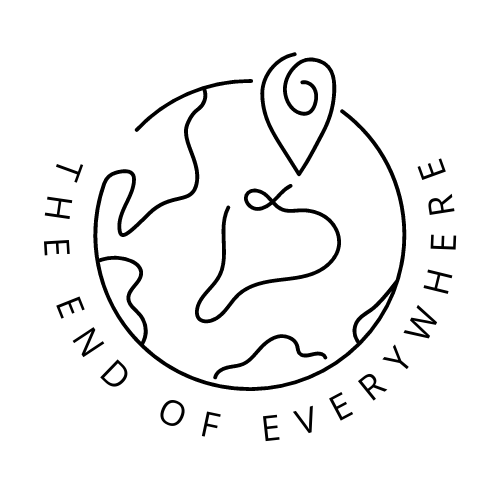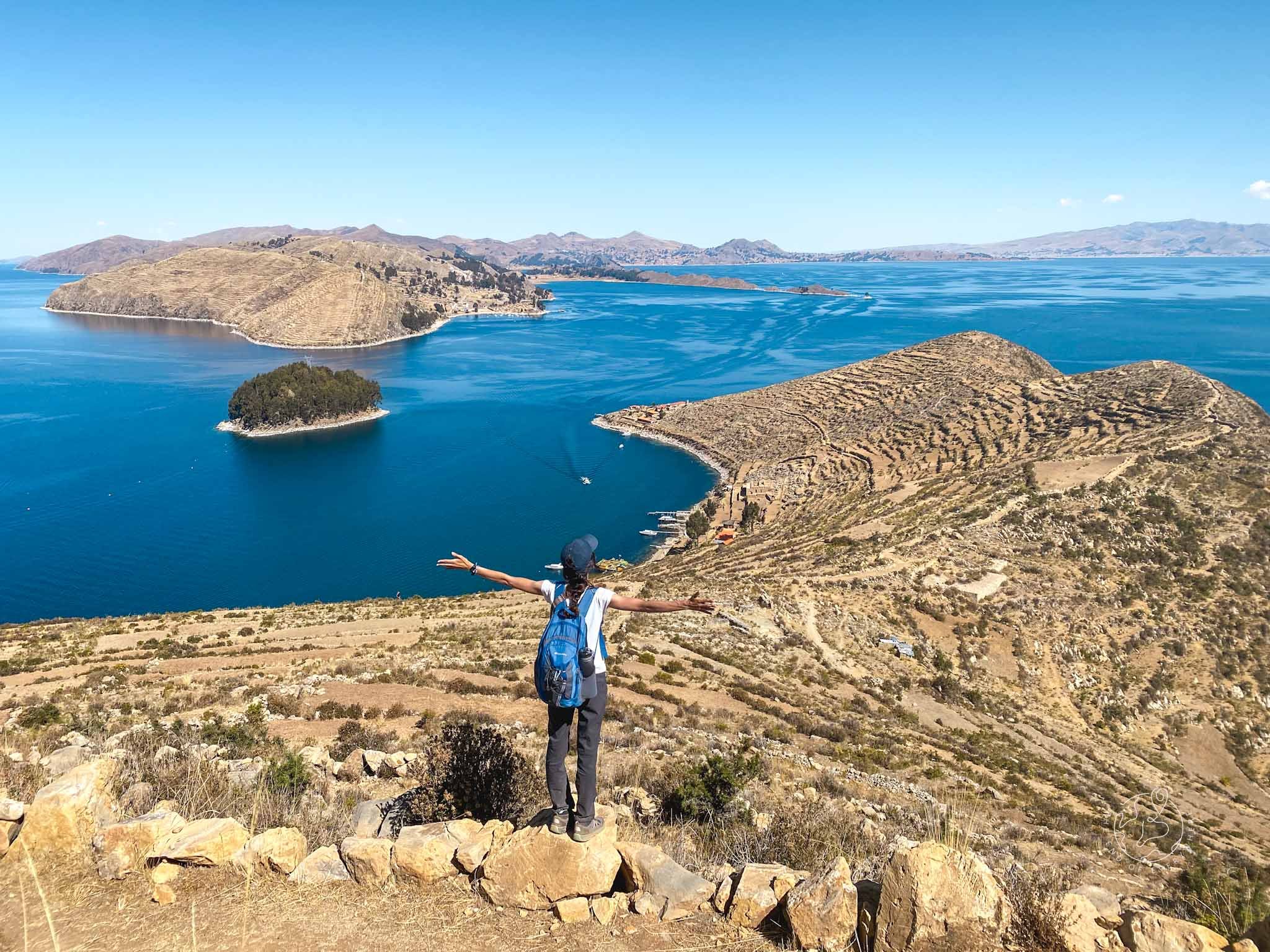A Tale of Two Capitals
The Fighting Cholitas of La Paz
Did you know that Bolivia has two capital cities? Me neither. Although… it depends who you ask.
La Paz is the administrative capital of Bolivia and is where the seat of government is today. Sucre is the constitutional capital of the country, the first capital and - according to the latest constitution of the country, the only actual real capital. It’s a sore point for some - less than 150 years ago the people of Sucre fought a civil war with La Paz to assert their title as capital city.
Visiting both capitals, we were astounded at the difference between them. La Paz is, quite frankly, chaos - but in the best way possible. There are cars and people and market stalls and noise and smells everywhere. Sucre, on the other hand, is a handsome place, with white washed colonial buildings set out in perfect grids. The traffic is still mad; but not on the same level!
It took us a long time to decide our route through Bolivia - we were keen to head east and get off the beaten track, but when we looked at the reality of our plans - we have 10 weeks to get to Rio - we realised we don’t really have as much time as we thought. Even travelling for a year isn’t enough!
With this in mind we stuck to the well-connected mountain route through the country. Here’s a look at our time in the two capitals.
La Paz
As mentioned, La Paz is the administrative capital of Bolivia, known for its dramatic geography where it sits in a deep valley surrounded by the high Andes Mountains.
It is one of the highest “capital cities” in the world, with its altitude reaching over 4,000 meters in the highest neighborhoods.
Magic and mysticism
One of the most notable landmarks is the Witches' Market (Mercado de las Brujas). Whilst most stalls are covered in souvenirs for tourists, there are some eye catching stands which sell traditional remedies and items used in indigenous rituals.
This market is a place where traditional Andean and Aymara beliefs in magic, mysticism, and rituals are preserved and practiced. It's not just a tourist attraction; it serves as a hub for indigenous medicinal and spiritual practices. The most notable of which require dead baby llamas and dried llama foetuses. Yep.
The llamas are used as part of a traditional ceremony to bring prosperity to the people as an offering for Pachamama, or Mother Earth - kind of like a sacrifice. We were told those that believe in Pachamama (as opposed to holding Catholic beliefs) will have an advisor that they visit regularly.
These advisors are known as witches, "yatiris" or traditional healers in the market, and they offer spiritual consultations and rituals. These healers are believed to have special powers and provide services ranging from fortune-telling to rituals for love, health, and protection.
Locals will discuss their desires, fears and hopes for the year, and their yatiri will advise them on the offering they should make - usually a llama along with a variety of spices, herbs and sweets - which will then be burnt in sacrifice.
Exploring the market was a great way to learn about indigenous beliefs and gain insight into Bolivian culture and spirituality. Even knowing the religious beliefs behind it, it is quite shocking when you first see so many dead animals hanging from market stalls. Our tour guide told us that no animals are killed for this purpose; they die of natural causes and are collected from the countryside. Maybe this is true, but the sheer volume of animals made us doubt this a little - is the Bolivian countryside strewn with dead llamas and alpacas?!
Getting high (…not like that!)
One of our favourite activities in the city was taking a self guided tour of the cable car system.
The network of cable cars, known as "Mi Teleférico," offer stunning views of the city as well as provide an efficient means of public transport. Inaugurated in 2014, it has become an iconic feature of the city and is now one the most extensive urban cable car networks in the world.
We spent a morning creating our own city tour by travelling around on the cable car network. We saw the whole city and it only cost £1.25 each!
We rode around in a little circle taking in the red, silver, yellow and light blue lines. This took us from the valley up to El Alto, along the ridge line and back to downtown La Paz.
We were treated to breath-taking panoramic views as we travelled over the steep slopes and deep valleys of the La Paz and neighbouring El Alto, as well as incredible views of the surrounding mountains, including the majestic Illimani peak.
Mi Teleférico has significantly improved transportation for local people, providing a reliable and relatively quick means of commuting between different parts of the city, as well as having a positive social impact in connecting previously isolated neighbourhoods, providing residents with better access to education, healthcare, and job opportunities.
Marching Powder
One infamous sight we had heard of before visiting the city was San Pedro Prison - subject of the mind-boggling book, Marching Powder. Located in the heart of the city, the prison garnered international attention for its unconventional living conditions and self-governance by inmates. Prisoners have significant control over daily life within the prison, including managing their own security, economy, and living arrangements - indeed, many inmates bring their families to live with them inside.
The international attention came when a British man was imprisoned at San Pedro… and began running guided tours of the facilities for foreign tourists and journalists. This could only end badly of course - I recommend reading the book for those who are intrigued!
Our visit remained firmly outside the prison walls, but we did see a number of people - including kids in school uniform - coming in and out of the main gates as we stood there. Our tour guide told us to wait outside the prison at 1pm to meet former American inmate, ‘Crazy Dave.’ Unfortunately we didn’t have time to do this, but it would have been interesting to hear his story!
The Fighting Cholitas
Our last night in the city we spent enjoying a traditional form of Bolivian entertainment - it was one of the most fun but bizarre experiences we’ve ever had… we went to see The Fighting Cholitas!
Cholita wrestling, also known as “Lucha Libre Boliviana,” is a form of professional wrestling inspired by the traditional Mexican “lucha libre” style, but with a distinctly Bolivian twist.
“Cholita” refers to indigenous women who typically wear traditional clothing, including layered skirts and bowler hats. Cholita wrestling features these women as the main wrestlers!
It’s not just a form of entertainment; it’s seen as a way for indigenous women to assert their strength, independence, and cultural identity, and so has become a symbol of female empowerment in Bolivia.
The matches incorporated humour, theatricality, and drama, with comical and dramatic storylines with clear heroes and villains. It really is a mix of sports and performance art!
We saw plenty of hair pulling, jumping off balconies and audience members being pulled into the ring… it was a really fun night out!
Sucre
Compared to the flurry of activity that was La Paz, our time in Sucre was incredibly relaxing.
We strolled the wide streets and plazas, admired the colonial architecture, and got acquainted with a number of cute coffee shops and bars. We even indulged in our first Airbnb of the trip - 4 months in! I say “indulge”… at £8 a night it was cheaper than most hotels, still, it was nice to have our own space.
So, as mentioned, Sucre is Bolivia’s constitutional capital and perhaps, one might argue, it’s spiritual capital - it was here the Declaration of Independence was signed on August 6, 1825, leading to the formation of the Republic of Bolivia, so named after the country's prominent leader and first president, Simón Bolívar. Sucre itself is named after the country’s second president, Antonio José de Sucre. History courses through the city’s streets.
I don’t have a list of sights to reel off here, because we really did just relax and enjoy the city. We did the obligatory walking tour to find out more about the city’s - genuinely really fascinating - history, but we mainly just enjoyed the perks of being at a lower altitude… warmth and sunshine!
From what we learnt, it’s clear Sucre is a pivotal place both culturally and historically in Bolivia, and it offered us a unique glimpse into both the nation's past and present.
From Sucre, our route would be taking us south to perhaps the most famous of Bolivian attractions: the Salt Flats of Uyuni.
Related Content


















